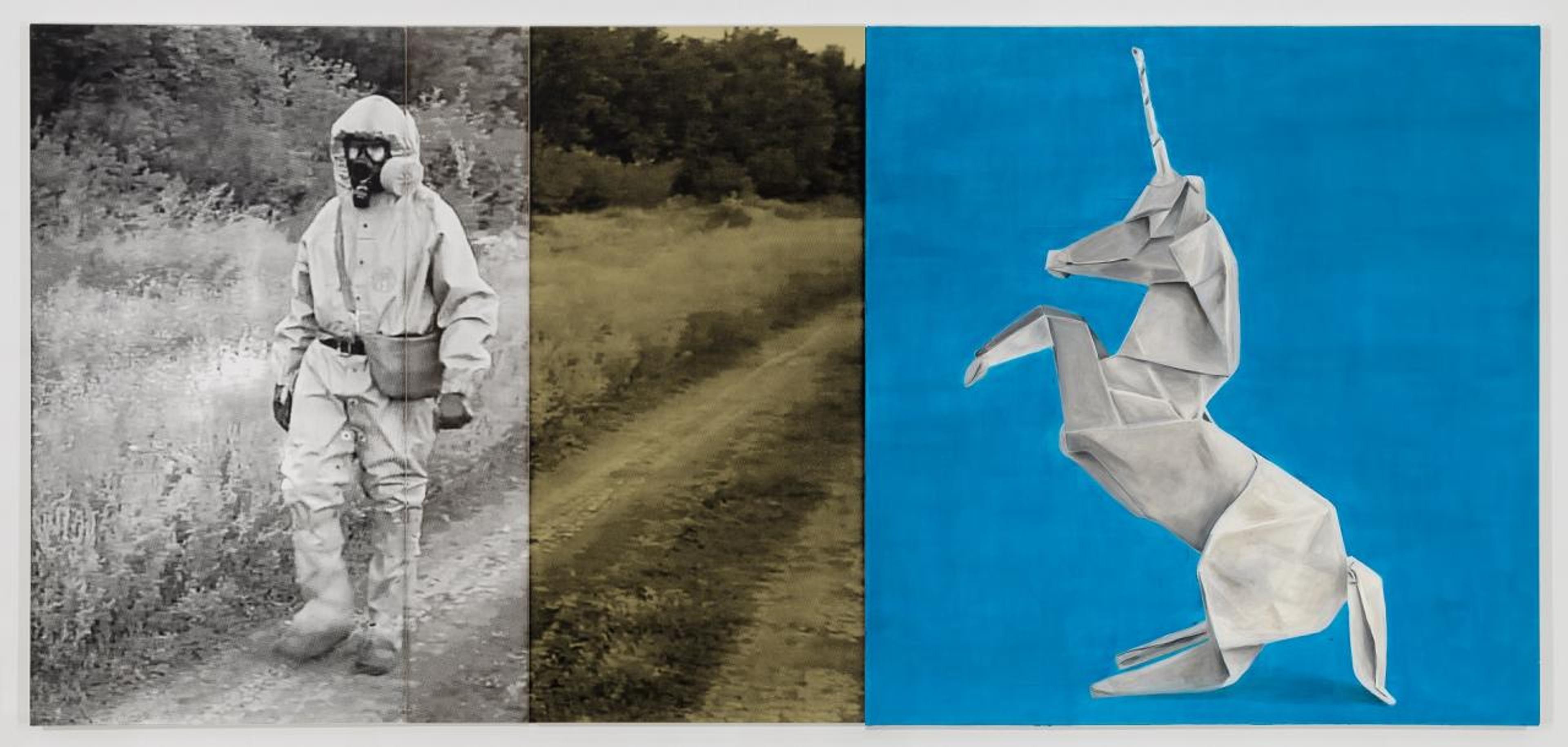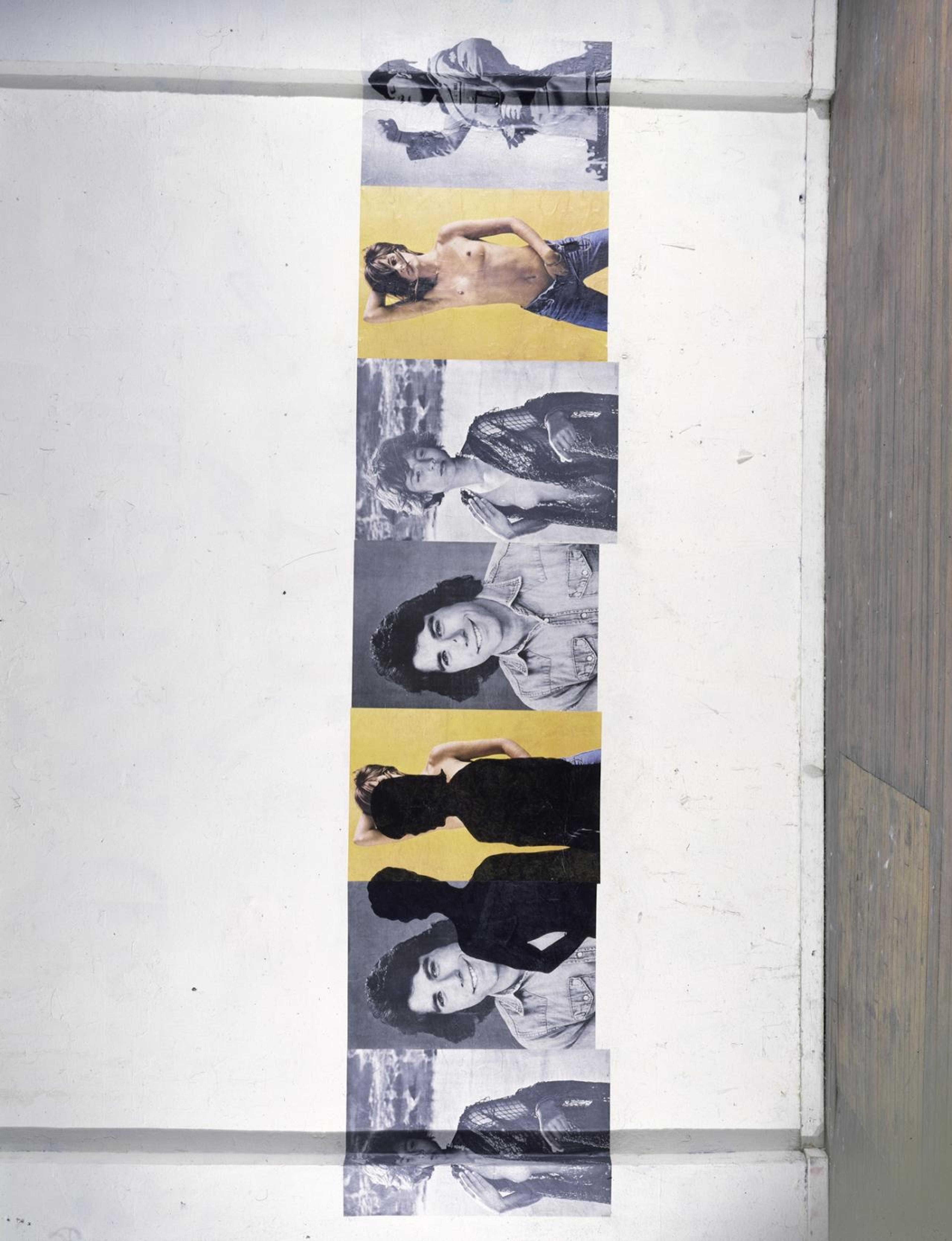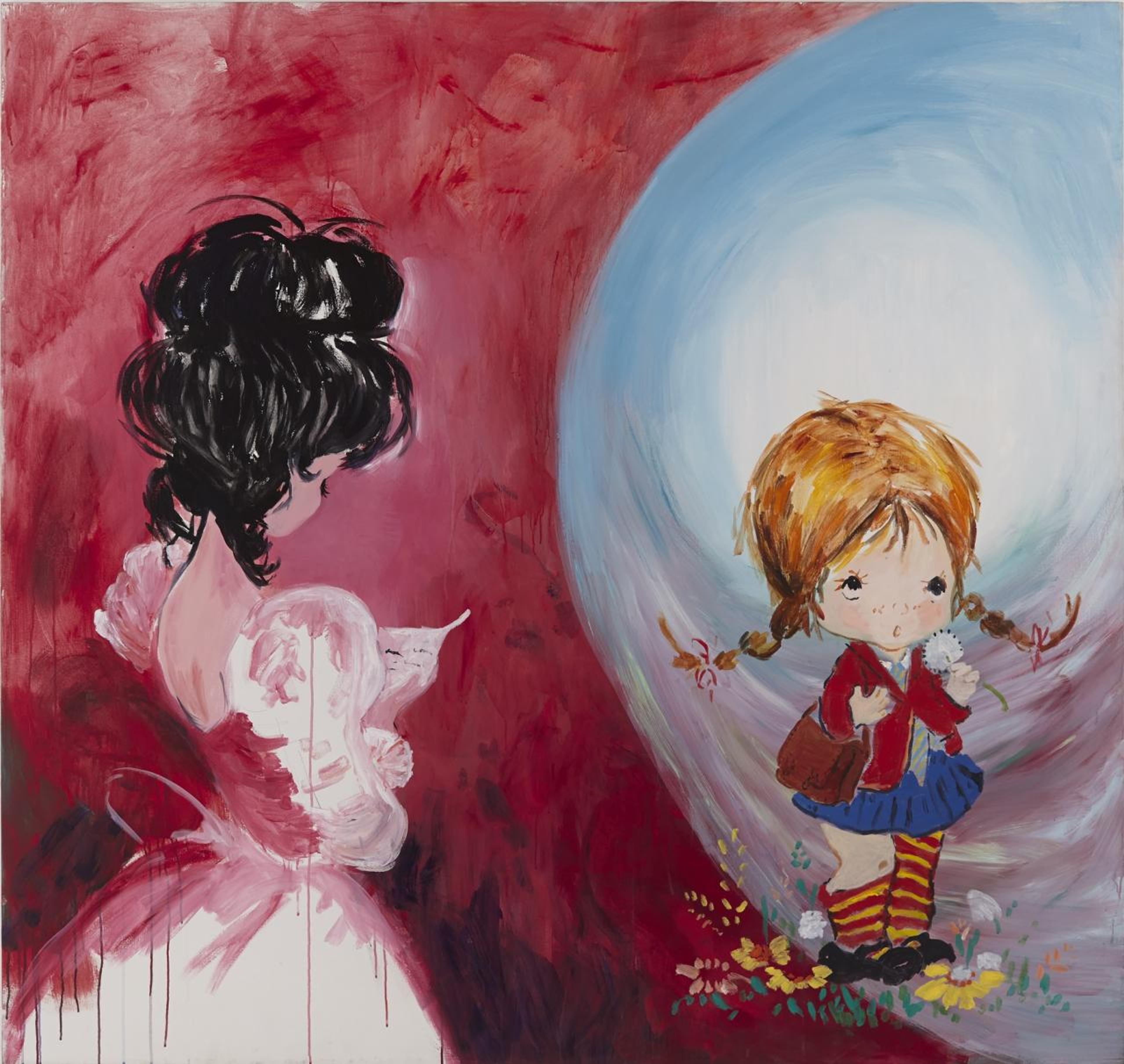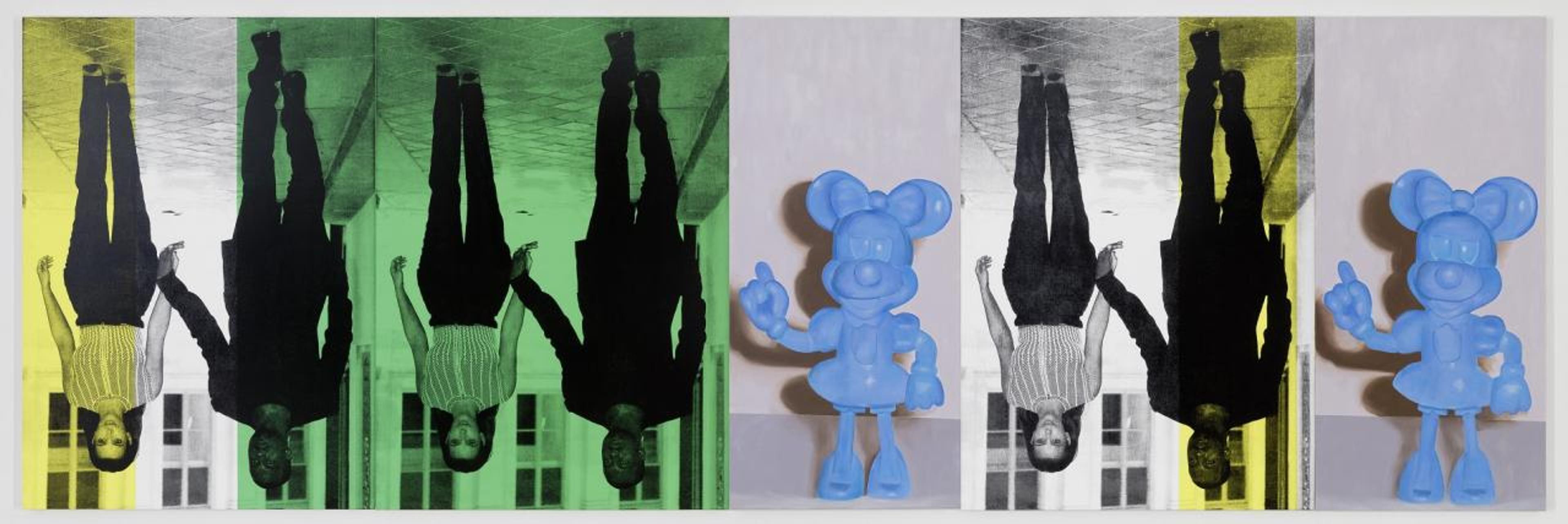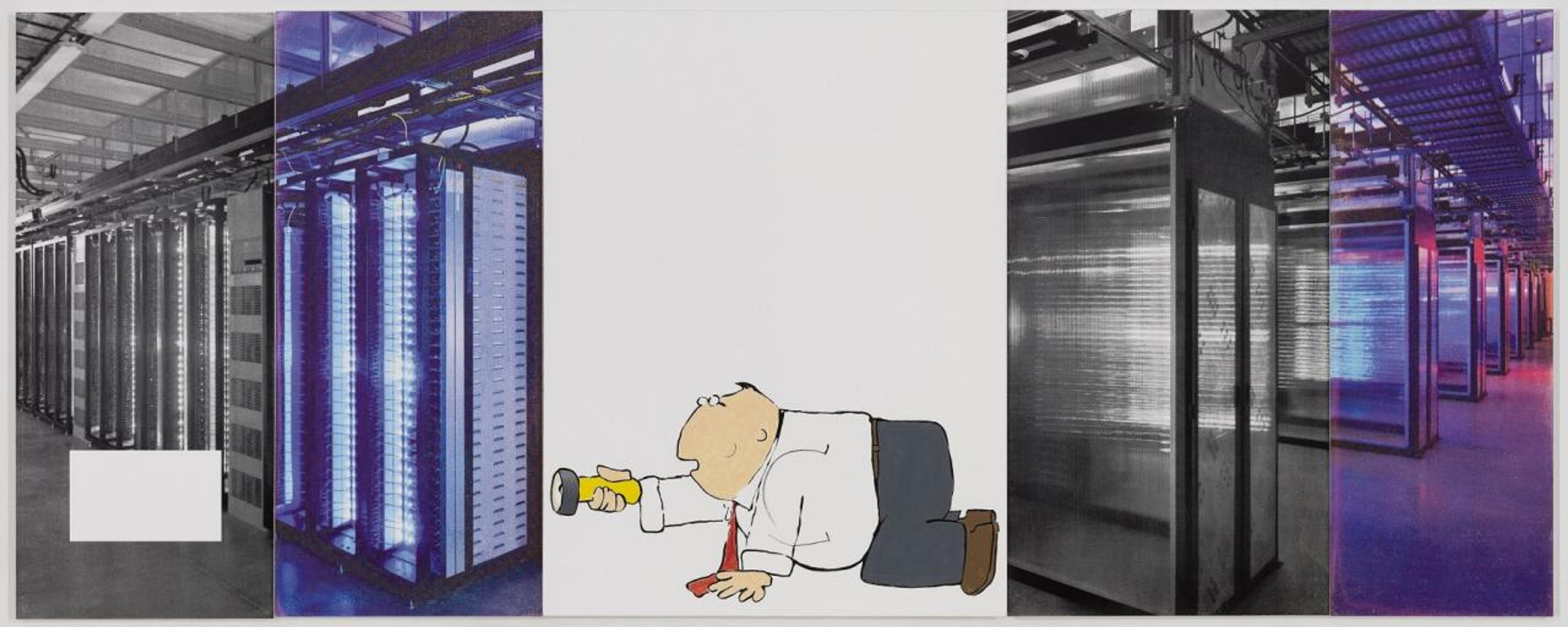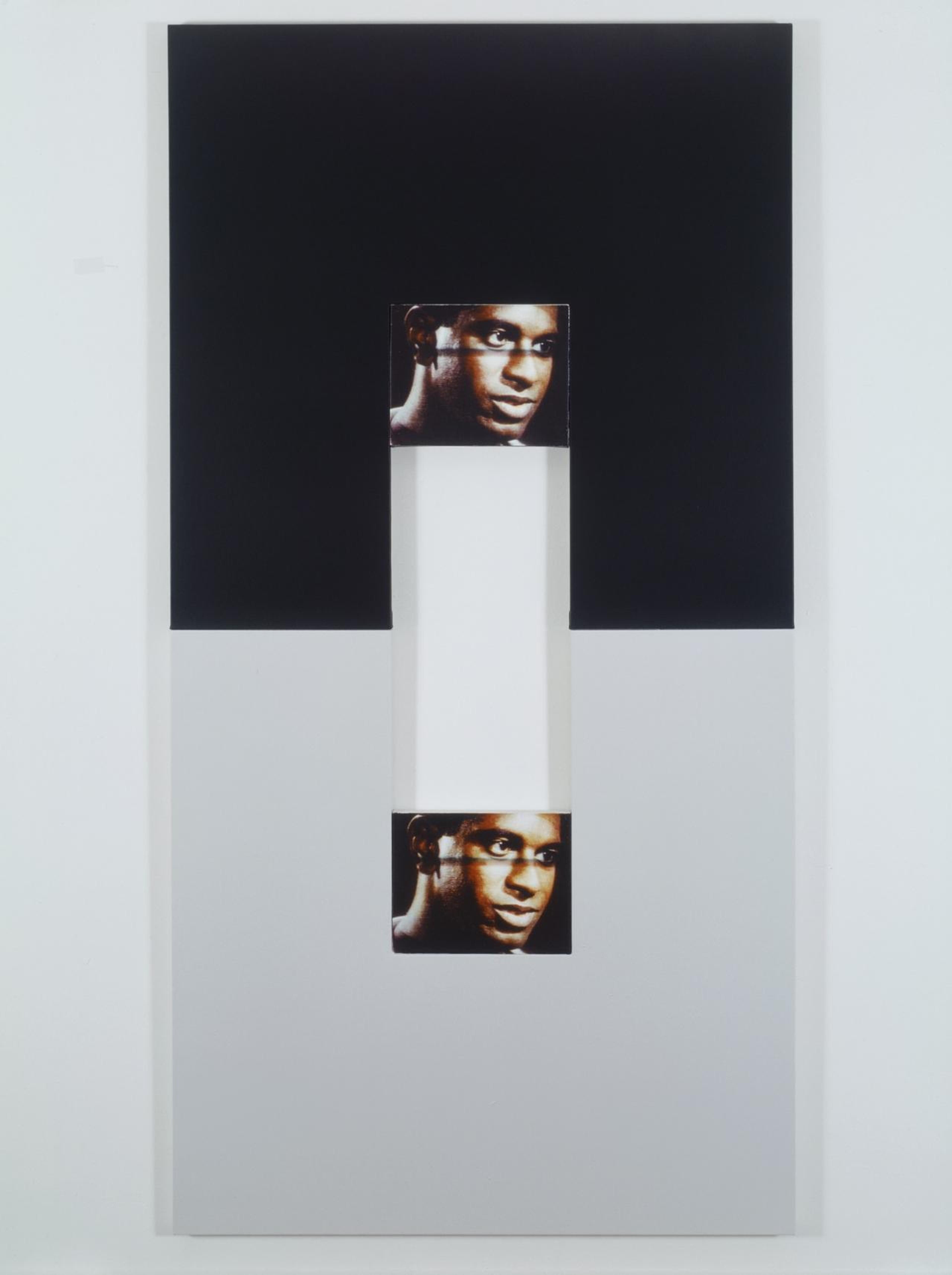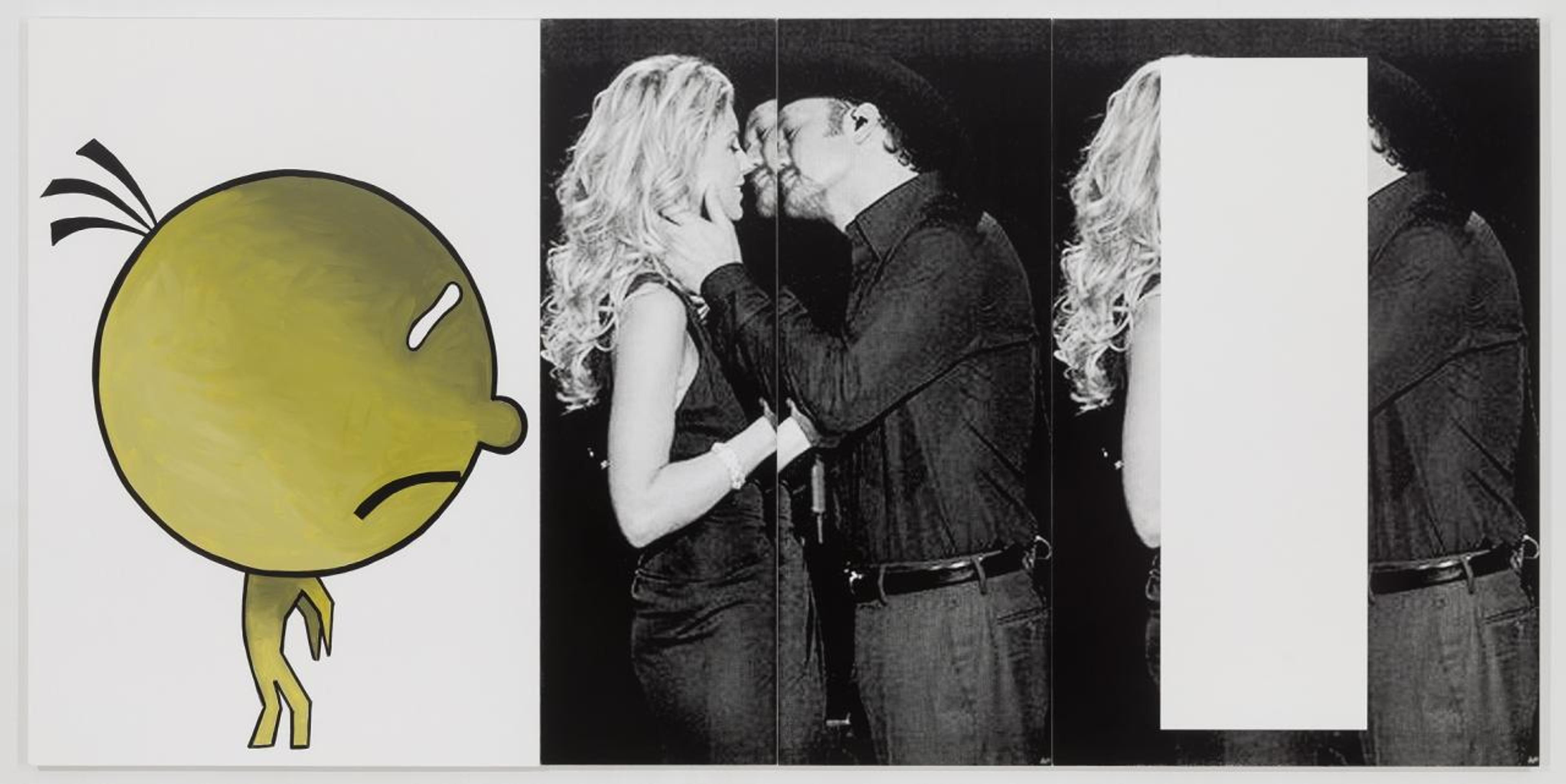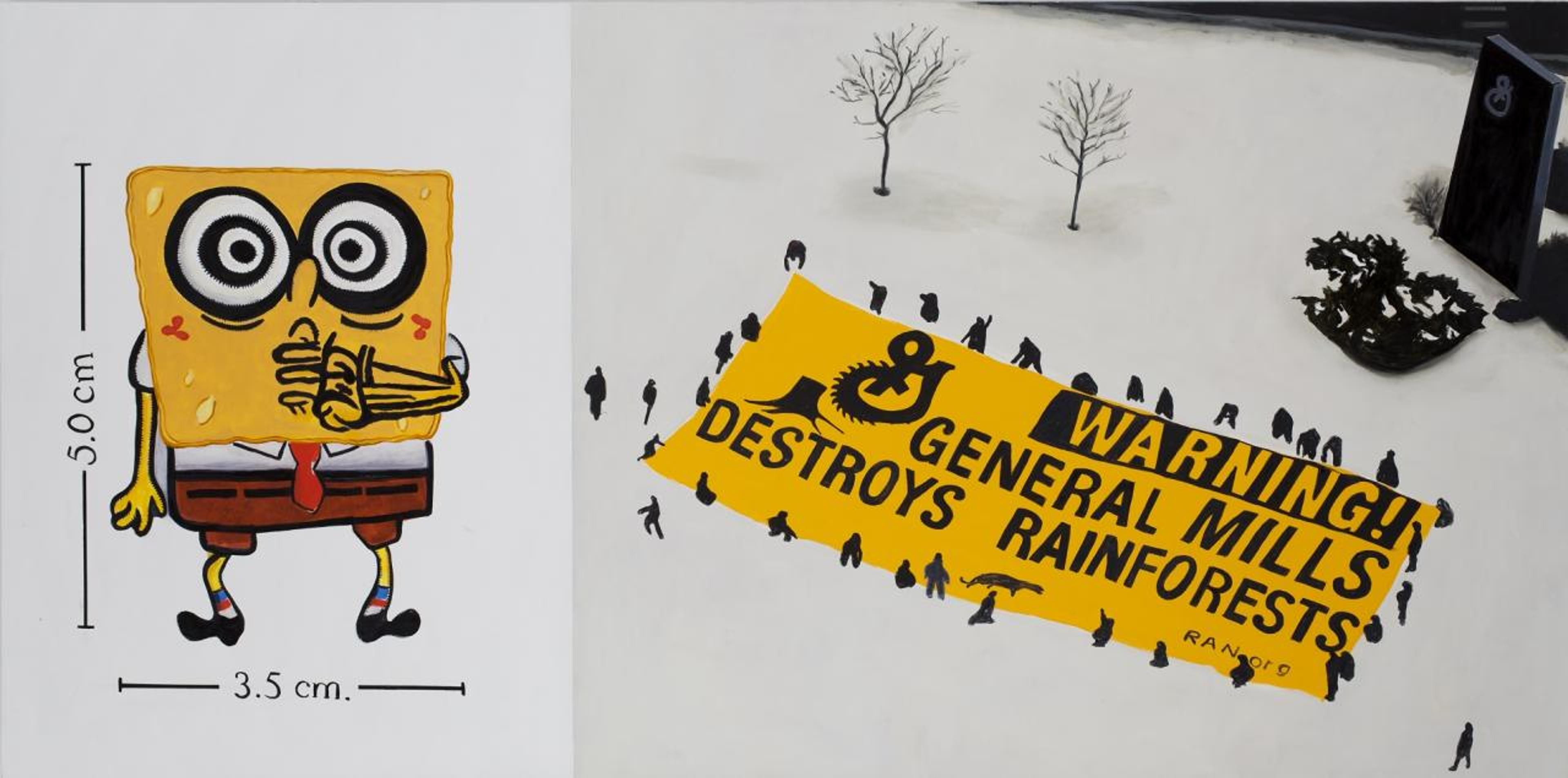In an age of content providers sought after by information or entertainment services, the recent market ascendance of vacant abstraction may be difficult to grasp. While content is valued, its lack on canvas, painted and unpainted, is overvalued. How exactly did this come to pass? Is it possible that although content within business is desired, its presence in pictures, to use an old-fashioned term for paintings, is burdensome? For the shopkeeper, content is problematic because it must be explained. For the buyer, it must be reconciled with politics, morality and taste, though it may provide guilty pleasure. For artists, the “burden” is much more fundamental. What is my subject? How shall it be rendered? Where will its meaning reside or recede?
Picture-making designates the invention and replication of images – whether painted, drawn, filmed or photographed, as opposed to stained, bleached, sun-dried and stonewashed. It is an activity that can be seen in relation to its history and its prospects, at times as faithfully promiscuous. Yet the sort of painting that has found favour in recent years may be thought of as picture un-making, inhabiting a present without reflecting its time, or only unwittingly. An indelible image: The vampire remains invisible in the mirror, even to itself. And so we endure a desultory parade of canvases spun round washing machines, trampled on the studio floor, doused with turpentine, and electroplated. Where representation appears, to say “my child could do that” is to rudely insult the child. Negation, apparently, is its own reward. Consider Rauschenberg’s Erased de Kooning Drawing : today there would be no de Kooning, only an erasure …
… You Disappear Me . Thirty years after the last significant period of representation, the Pictures Generation, our meager inheritance adds up, rather unspectacularly, to an Un-Pictures Generation. Despite creating a deficit for art historians and the story thus far – and no farther? – it’s clear that lacking ideas for what to paint, or the capacity to paint at all, has generated many happy returns. (An old joke from the 1980s rears its bratty head. Q. “What’s this painting about?” A. “It’s about $40,000.”) And yet in the marriage of art and its markets, increasingly with underage partners, how is a lasting fidelity possible when commitments between artists and their projects are paper-thin? Art as a certificate of inauthenticity? How substantial, one wonders, is the artist’s investment? When it’s indifferent, the art, like a tiresome boyfriend, is unceremoniously dumped. The relations on display, devoid of human contact, suggest that the vulnerability required of human engagement, its messiness, confusion, and anxiety, are …
… Relations Of Absence . This is the title of a 1981 photo-based installation by Julia Wachtel. Commercially available posters – of an eroticized waif, John Travolta as the boy-next-door, a woman defiantly bared, and Mussolini in full dictatorial pose – were pasted to the wall, sequenced in repetition, and over-painted with the silhouette of a male-female couple. What’s missing, what can only be visualized as negative space, are viewers who attempt to inhabit and make sense of these images, at once seamless and fragmentary. Appropriation in this period transformed collage, which was no longer a matter of pieces overlaid and interlocked, but individual images presented in their entirety. The image-world of the 80s, in its fatal attractions, would provide a source of libidinal repulsion and fascination. In this charged atmosphere, Wachtel was among a number of artists, including Jessica Diamond, Gretchen Bender, Alan Belcher, Sarah Charlesworth, Peter Nagy, and Steven Parrino, whose diverse works were brought together in the mid 80s under the banner of Infotainment – the pop-inflected merging of information and entertainment – and in a moment, then as now, when movements were a thing of the past. Even as it was propped up, the status of painting was addressed. Nagy’s Painting of Value (1984), was in actuality a black-and-white photocopy based on an ad for jewelry. Parrino’s misstretched and distorted canvases allowed the monochrome to be seen as disfigurative and once again radical. Wachtel’s representations, shown in proximity, also courted disfiguration.
Infotainment could not possibly evade content. This was the very material with which it was made. Picture- making, which it flirted, embraced, and collided with, was its primary activity.
By 1982, Wachtel dispensed with printed posters and began to paint individual figures, placing them side-by-side. The silhouettes were replaced by the artist’s belief that viewers, suitably provoked, would complete the picture. Wachtel understood that an audience can catch itself in laughter and wonder how it is that they’re laughing.
Just the Two of Us ,
from that year, presents a double image of a poised young woman and an awkward little girl, both appropriated from greeting cards. Wachtel not only turned to a traditional medium, but drew her content from lowly, suspect sources: representations found on the covers of cheap romance novels or donated to Goodwill stores. (Her works from this time call to mind Jim Shaw’s “Thrift Store” paintings, Mike Kelley’s Missing Time Color Exercise (1998), based on Sex To Sexty cartoons from the late 60s/early 70s, and the pulp illustration that fuels recent work by Richard Prince.) The doubling in Wachtel’s work sets up a myriad of exchanges – between illustration and painting, painting and photography, manual and mechanical reproduction, abstraction and representation, high and low. Pairing cartoons and “primitives” (figures sourced from folk art and archaeology) and marrying cartoon characters to celebrities, her paintings resemble a schizophrenic shotgun wedding – most memorably in the coupling of Cher and a toothless peg-leg pirate in You Disappear Me (1987). Cartoons and primitives are isolated on monochrome and painterly grounds. Celebrities occupy the grit and transparency of the screen print. Sequentially arranged in multiple colour chart panels, they look like chromatic progressions by Ellsworth Kelly that inexplicably reflect the befuddled performers before them. Wachtel’s mirroring may be regarded by purists as that of the funhouse. Yet her insertion of the unexpected – party-crashers, as it were – parallels the entry of Pop artists who came from commercial work, window decoration, and sign painting, as well as abstract painters with backgrounds in graphic and product design, who, in the 60s, laid the foundation for neo-geo. Wachtel has said that her original attraction to greeting cards was due to the characters and the emotions they signified, as well as the painted stage they occupied. Ultimately, two forms of pantomime. In the wake of 80s neo-expressionism, Wachtel’s representations offered a rejoinder to an overwrought emotionality, enacted on its own terms – the “hallowed” space of painting – heightened and distanced.
By the late 80s, Wachtel adopted one of painting’s most traditional genres, the landscape. Animating its politicized ground, she engaged with discontent and its fallout. Chernobyl, the Berlin Wall, the spectacle of selfhelp, better living through chemistry, government follies, police brutality, and that great fiction of banality: reality television. After a nearly ten-year hiatus, a stepping back not uncommon among artists from that time who are now being re-discovered, whose earlier work is seen as prescient – from Ericka Beckman and Sarah Charlesworth to Troy Brauntuch and Joel Otterso – Wachtel returned to painting. Since 2011, her cast of characters, vocabulary, and concerns have been rearticulated in works addressing much of what we remain consumed by: war and protest, politics as entertainment, corporate greed and environmental negligence, celebrity culture, billions of images with no end in sight, and conspicuous consumption itself. This brings us back to where this essay started, haunted and appalled by the specter of art being hijacked – nothing personal, it’s only business – and artists who obligingly purge their work of bothersome content. To the non-expressionists we dedicate Wachtel’s 2015 canvas, The Execution of Abstraction . Clearly, artists who have returned to working and exhibiting – and selling – do so in an even more heatedly absurd environment than the so-called big, bad 80s. The engagement with picture-making remains not only a matter of unfinished business, but a cause which painting may continue to serve.
Bob Nickas is a critic and curator. He lives in New York.
Julia Wachtel , born 1956 in New York. Lives in New York. Exhibitions: Toys Redux – On Play and Critique, Migros Museum, Zurich; Empowerment, Elizabeth Dee, New York (solo) (2015); The Cleveland Museum of Art, Ohio (solo); Bergen Kunsthall (solo) (2014); Vilma Gold, London (solo) (2013); In Twenty-Five Minutes, The Artist’s Institute, New York; The Old, The New, The Different, Kunsthalle Bern; Remote Control, ICA, London (2012). Represented by Elizabeth Dee , New York and Vilma Gold , London



